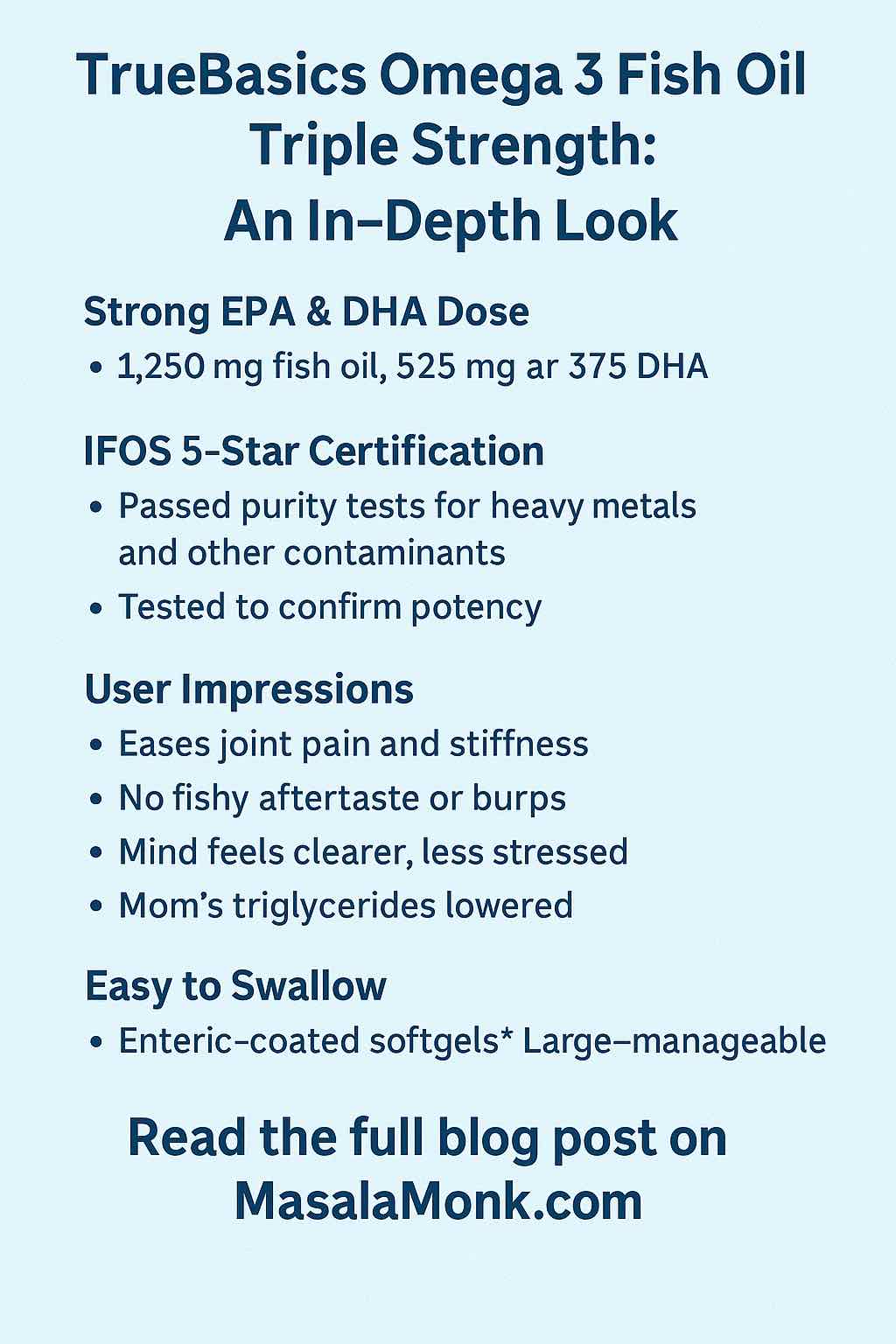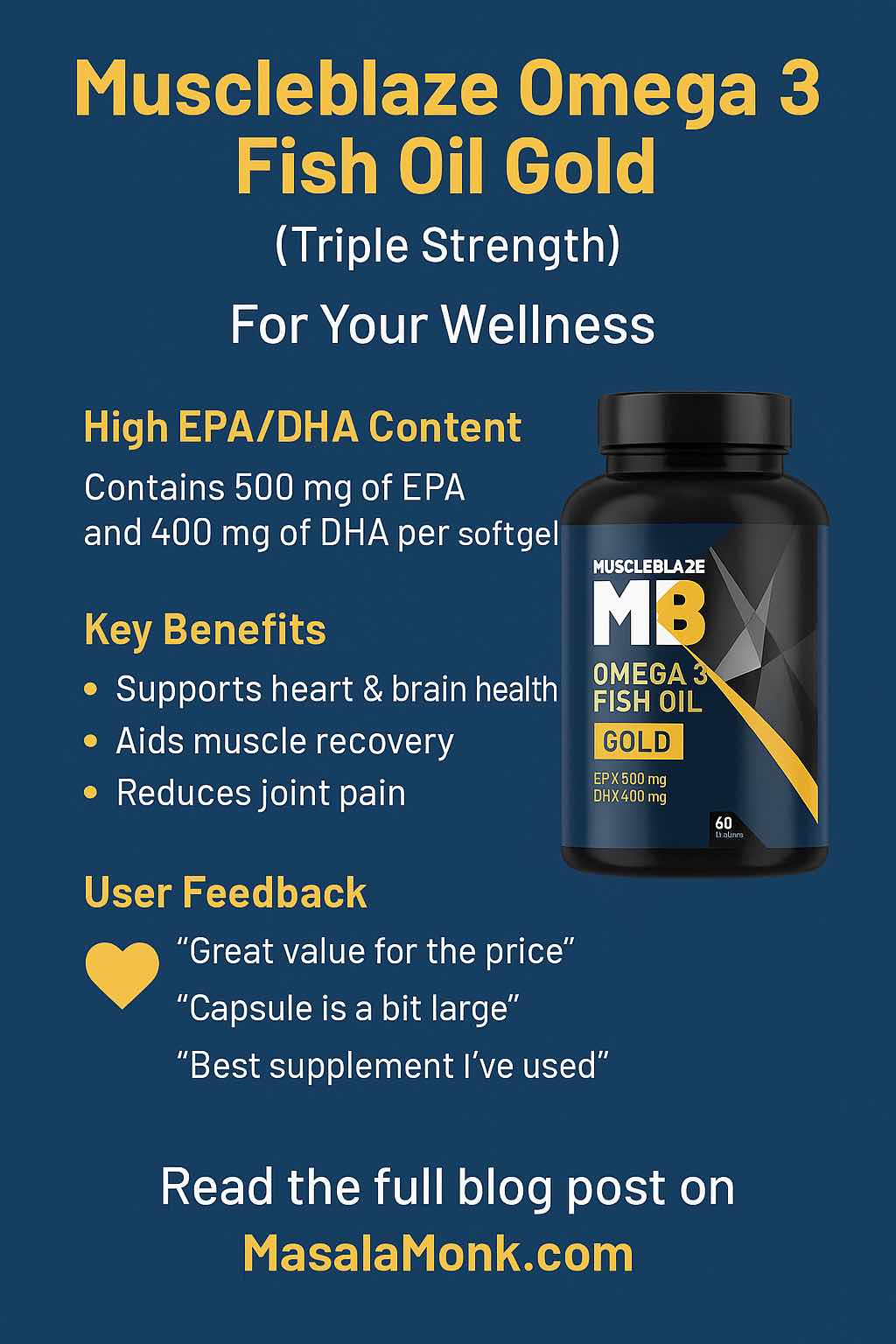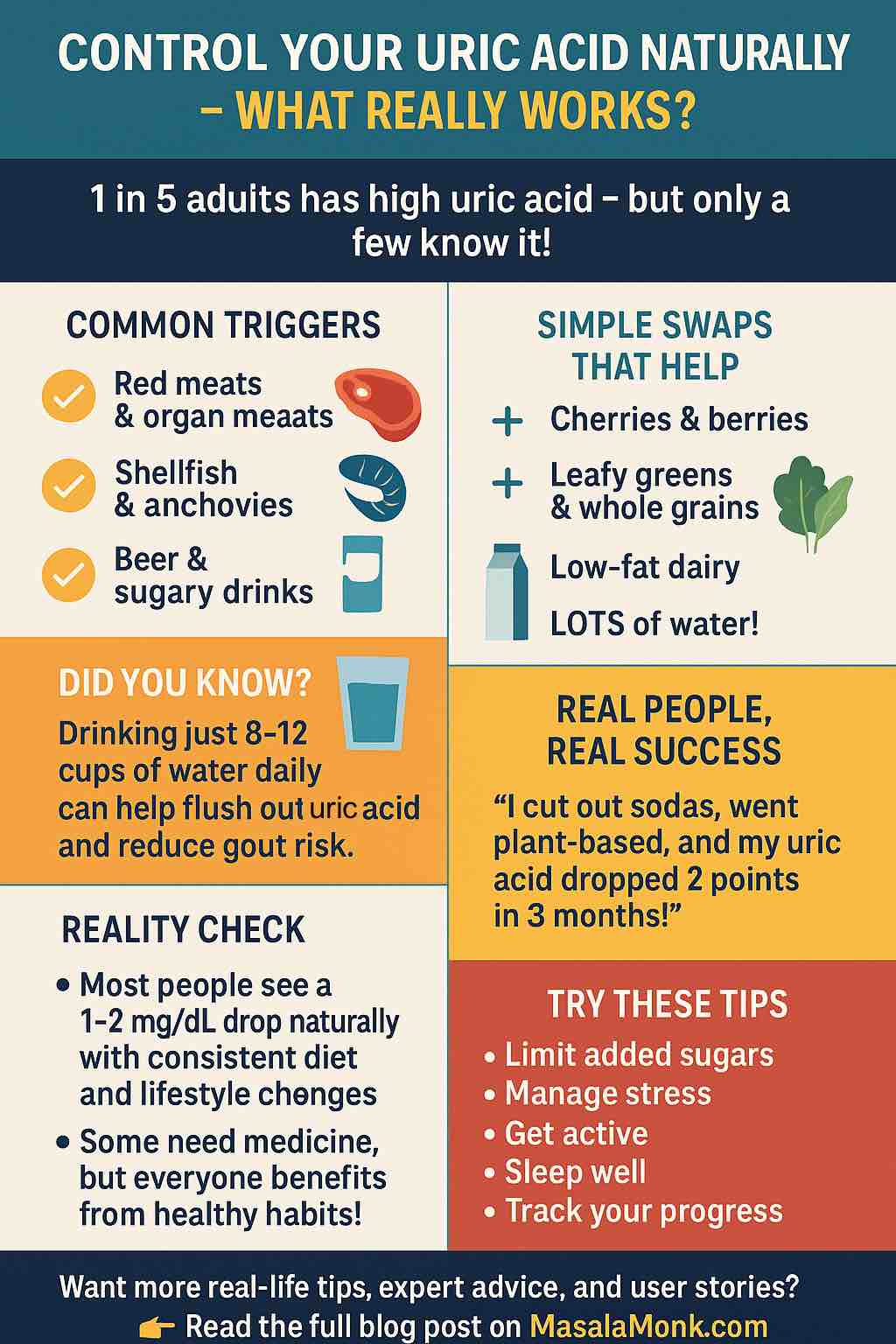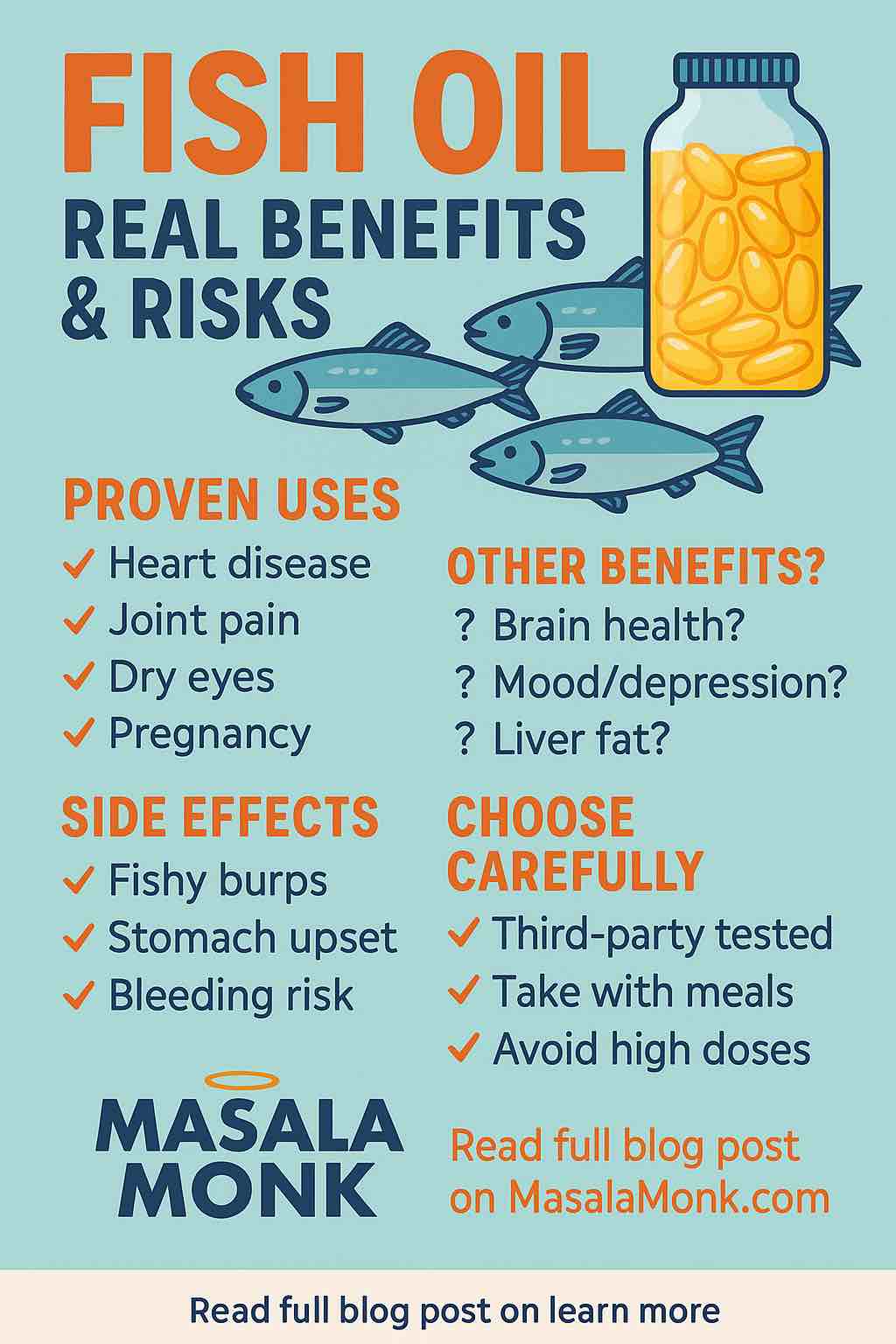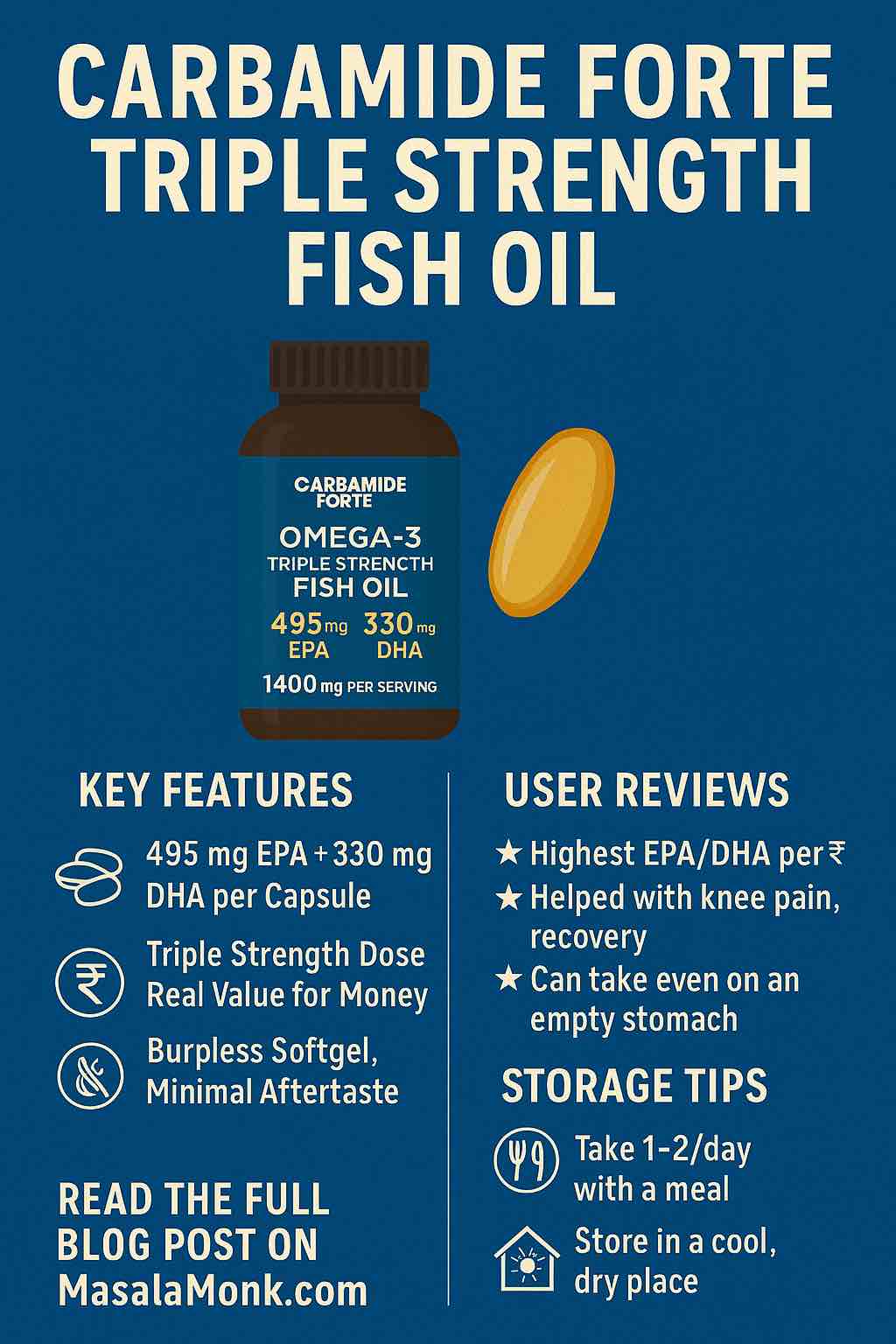
Introduction: Why Carbamide Forte Stands Out in the Omega-3 Crowd
Fish oil supplements are everywhere in India, but only a few truly balance high EPA/DHA doses, practical pricing, and proven results. If you want the maximum omega-3 content for your rupee, Carbamide Forte Triple Strength is almost impossible to ignore.
But is it the “best” for every user? Is the lower price a tradeoff on purity or effectiveness? Let’s get practical—breaking down ingredients, certifications, user experience, value, and how it really stacks up to India’s best.
For the complete head-to-head of all 7 leading omega-3 brands, see this guide.
Product Snapshot: What’s Inside Carbamide Forte Triple Strength?
- Per Capsule: 1,400 mg fish oil (495 mg EPA + 330 mg DHA + 180 mg other omega-3s)
- Typical Dosage: 1 capsule daily for general use; 2 for clinical support (consult your doctor)
- Pack Sizes: 60 or 90 softgels (₹699 for 60, ₹999 for 90; see current Amazon price)
- Source: Deep-sea fish (sardine/anchovy); oil imported, capsules manufactured in India
- Form: Ethyl ester (EE), not triglyceride (TG); gelatin-based softgel
- Purification: Molecular distillation, GMP & ISO certified facility
- Certifications: No international (IFOS/Labdoor), but in-house and third-party purity tests
- Flavor: Unflavored, “burpless” design—no artificial masking
Why Carbamide Forte? The Case for Value & Bulk Dosing
1. India’s #1 Best-Seller for Value Seekers
- Delivers more EPA+DHA per rupee than almost any major competitor.
- Frequently the top fish oil on Amazon India, especially during sales.
- Popular for multi-user households, family wellness, and supplement beginners wanting high dose without big spending.
2. Triple Strength Dose—But What Does That Mean?
- 495 mg EPA + 330 mg DHA per pill: much higher than standard 180/120 mg capsules.
- 1–2 softgels/day meets most “clinical” research standards for joint, brain, or heart health.
- Many reviewers say: “I switched from 3 pills of my old brand to just 1–2 of these.”
3. “Burpless” Softgel—Does It Deliver?
- Most users report little to no fishy aftertaste or reflux, especially when taken with a meal.
- No flavoring—just plain softgel; take quickly, don’t chew.
- Some rare odor complaints (see below), but generally rates well for GI comfort.
Purity & Ingredient Deep Dive
- Form: Ethyl ester (EE)—slightly less absorbable than TG, but delivers high mg/capsule at lower cost.
- Molecular distillation: Standard for removing heavy metals, PCBs, dioxins; all reputable Indian fish oils use this.
- GMP, ISO certified manufacturing: Consistency and basic safety checks.
- No artificial flavors or preservatives: Only what’s needed for shelf stability (vitamin E/tocopherol).
Key point: No IFOS or Labdoor third-party global certification. Most users trust manufacturer/retailer claims, but safety-first buyers may prefer TrueBasics or Tata 1mg.
Real User Reviews: What Actual Buyers Experience
⭐ The Good
- “Unbeatable value for money”
“Highest EPA/DHA per ₹; great for families, daily users.” - “Helped with knee pain, joint stiffness, recovery”
“My father is walking better, and my DOMS (muscle soreness) is much less.” - “No fishy burps or aftertaste”
“I can take it without breakfast and feel fine. Even my mother uses it with no GI issues.” - “Long-term repeat buyers”
“On my 4th bottle, using for over a year—always fresh if stored properly.”
❗ The Bad/Neutral
- “Capsule is large—tough for some”
“My mom finds it hard to swallow, I have no issue.” - “Sticky/leaky capsules in heat”
“Summer order arrived with softgels stuck together. Seller replaced, but refrigerate in hot places.” - “No IFOS/Labdoor badge”
“Would prefer international lab test, but good value for the price.” - “Strong smell if not fresh”
“Open the bottle—if it stinks or pills are cloudy, request a replacement.”
How to Take Carbamide Forte Triple Strength Omega 3
- 1 capsule daily with a meal containing fat (milk, ghee, eggs, nuts) for best absorption.
- 2 capsules daily for maximum clinical effect (ask your doctor if you have a medical condition or take blood thinners).
- Swallow whole with plenty of water—do not chew, break, or open softgel.
- Store in a cool, dry place—refrigerate in summer or hot climates.
- Use within expiry—never take capsules that are cloudy, stuck together, or smell strongly “fishy.”
Comparison Table: Carbamide Forte vs Other Leading Brands
| Product & Review Link | EPA/DHA per Cap | Price (60 caps) | Features | Buy Link |
|---|---|---|---|---|
| Carbamide Forte Triple Strength | 495/330 mg | ~₹699 | Value, bestseller, EE | Amazon |
| TrueBasics Omega 3 | 525/375 mg | ~₹649 | IFOS 5-star, TG, enteric | Amazon |
| Tata 1mg Triple Strength | 560/400 mg | ~₹715 | TG, enteric, pharmacy | Amazon |
| MuscleBlaze Gold Triple Strength | 500/400 mg | ~₹875 | Max EPA, vanilla, TG | Amazon |
| Neuherbs Deep Sea Omega 3 | 446/297 mg | ~₹699 | Lemon, D3/E, EE | Amazon |
| Wellbeing Nutrition Omega 3 | 612/408 mg | ~₹948 | Curcumin, slow release | Amazon |
| MuscleBlaze Standard | 180/120 mg | ~₹475 | Starter, small, budget | Amazon |
For a detailed chart and all brand reviews, check our Best Fish Oil in India guide.
Who Should Choose Carbamide Forte?
Best For:
- Families, beginners, or budget-conscious buyers who want the highest total omega-3s for the lowest cost.
- Anyone who can swallow large softgels and is looking for a simple, unflavored, “burpless” pill.
- People who don’t need international certification, but want basic safety and consistent results for joints, skin, heart, and general wellness.
Consider Other Brands If:
- You want maximum purity/absorption (choose TrueBasics or Tata 1mg)
- You’re very sensitive to pill size, flavor, or GI effects (try MuscleBlaze Standard or Neuherbs Deep Sea)
- You require a certified vegan/vegetarian supplement (this is not)
Pros & Cons
✔️ Pros
- Unmatched value for price
- High EPA/DHA per pill—fewer capsules to reach clinical doses
- Generally burpless, minimal aftertaste
- Widely available, popular, repeat buyers
❌ Cons
- Large softgel—hard to swallow for some
- No IFOS/Labdoor certification
- Occasional quality issues in heat (sticky/leaky)
- Not flavored or vegan
Final Verdict: Should You Buy Carbamide Forte Triple Strength?
If you’re seeking maximum omega-3s for your money, Carbamide Forte is one of the best Indian options available—especially for families or high-dose needs. While it lacks global certifications, real-world user experience and basic purity processes make it a reliable, effective, and budget-friendly pick for most Indian buyers.
Buy Carbamide Forte at best price here:
👉 https://www.amazon.in/Carbamide-Forte-Strength-Capsule-Capsules/dp/B089YVZ4H2?th=1
Further Reading & Related Resources
- Best Fish Oil Supplements on Amazon India – Full Comparison
- What is Fish Oil Good For? (Benefits, Science, Side Effects)
- TrueBasics Omega 3 Triple Strength Review
- Tata 1mg Triple Strength Omega 3 Review
- MuscleBlaze Gold Triple Strength Review
- Neuherbs Deep Sea Omega 3 Review
- MuscleBlaze Standard Omega 3 Review
Affiliate note: This review contains affiliate links, which help support independent, unbiased research.
10 FAQs for Carbamide Forte Triple Strength Fish Oil
1. What is the EPA and DHA content per capsule in Carbamide Forte Triple Strength Fish Oil?
Each capsule contains 495 mg EPA and 330 mg DHA, providing a high total omega-3 dose for Indian users.
2. Is Carbamide Forte Triple Strength certified for purity and tested for heavy metals?
Yes, the product is molecularly distilled and made in a GMP, ISO certified facility. However, it does not carry international certifications like IFOS or Labdoor.
3. What is the main advantage of Carbamide Forte over other brands?
Its value for money—you get one of the highest EPA/DHA doses per rupee, making it ideal for families and bulk users.
4. Is the omega-3 in Carbamide Forte in the triglyceride (TG) or ethyl ester (EE) form?
It uses the ethyl ester (EE) form, which is less expensive but slightly less absorbable than the natural TG form. Always take it with a fat-containing meal for better absorption.
5. Are the capsules easy to swallow?
The softgels are large (triple strength), which may be difficult for some people (especially elders or kids) to swallow.
6. Does this fish oil cause burps or aftertaste?
Most users report little to no fishy burps or aftertaste, especially when taken with food. There is no artificial flavor masking.
7. Is Carbamide Forte fish oil vegetarian or vegan?
No, it contains fish oil and is encapsulated in gelatin softgels. It is not suitable for vegetarians or vegans.
8. How should I store the capsules?
Store in a cool, dry place, away from sunlight and heat. In very hot climates, refrigeration is recommended to prevent softgels from sticking or leaking.
9. How long does it take to see results?
Improvements in joint comfort, energy, or skin are commonly reported within 3–6 weeks of consistent daily use.
10. How does Carbamide Forte compare to premium brands like TrueBasics or Tata 1mg?
Carbamide Forte is unbeatable for price and bulk dosing. However, TrueBasics and Tata 1mg offer international certification and/or TG form omega-3—ideal for those prioritizing maximum purity or absorption.

